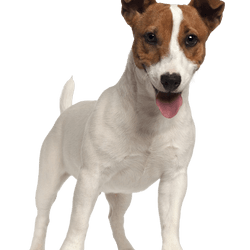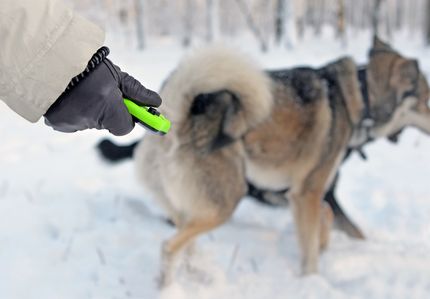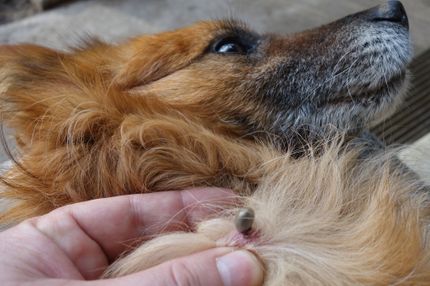Facts & Origin
The Maltese Jack Russell Terrier Mongrel, also known as the "Maljack", is a cross between a Maltese and a Jack Russell Terrier. These two breeds bring different but fascinating traits that result in a unique combination of temperament, appearance and behavior in this mixed breed.
The Maljack is an intriguing blend of two popular breeds that makes for a versatile and appealing pet. With proper care, attention and training, this mixed breed can become a lively and loving family member. Its energy and resourcefulness, coupled with its ability to form strong bonds with its people, make the Maljack an interesting and rewarding choice for many dog lovers.

| Alternate Name | Maljack |
| Origin | England - Malta |
| Life expectancy | 12 - 16 years |
| Care requirements | low-maintenance - high-maintenance |
| Activity level | high - low |
| FCI group | not recognised |
| AKC group | not recognised |
| KC group | not recognised |
More Jack Russell Terrier mixes
More Maltese mixes
Attitude, character and temperament of the breed
Termparement and temperament of a Maltese Jack Russell Terrier mongrel.
The temperament of the Maljack is an exciting blend of the characteristics of both parent breeds. The lively and energetic nature of the Jack Russell Terrier, combined with the loving and gentle personality of the Maltese, results in a playful but affectionate dog.
Maljacks tend to be intelligent and eager to learn, which can make training easier. However, they can also inherit the independence and stubbornness of the Jack Russell, so early socialization and consistent training are crucial.
Character
Usage
As with most mixed breed dogs, the Maljack can benefit from hybrid vigor, with a reduced risk of some genetic health problems. However, it is advisable to watch out for potential health risks of both parent breeds, such as eye problems, skin allergies or joint problems.


This is what the Maljack can look like
The Maljack varies in appearance and size, depending on the specific genetic traits it inherits from each parent. The size is usually between 25 and 35 centimeters, with a weight of 3 to 7 kilograms.
The coat can be short to medium length and ranges in color from white, cream, brown or even multicolored. It can have the silky texture of the Maltese or the denser coat of the Jack Russell Terrier.
| Fur length | short - long |
| Fur | rough-haired - flat coated |
| Ear shape | Tilt-ear - Triangle |
| Tail | lang - fanned out |
| Anatomy | sporty, dainty |
| Size ♀ | 20 - 38 cm |
| Weight ♀ | 3 - 8 kg |
| Size ♂ | 21 - 38 cm |
| Weight ♂ | 3 - 9 kg |
| Suitable For | - |
Known Diseases
Cataract
Cataracts are still one of the most common causes of blindness, even in dogs.
Numbness
Often occurs in old age.
Ataxia
Ataxia (from Greek ἀταξία ataxia 'disorder' 'irregularity') is a generic term in medicine for various disorders of movement coordination. Ataxia can occur even when there is no paralysis (paresis), that is, when there is normal muscle strength.
Atopy
Canine atopic dermatitis or environmental allergy is characterized by itching with scratching, biting, and rubbing of the face, paws, and belly
Dermatophytosis
Dermatophytosis (synonym dermatophytosis, from ancient Greek τὸ δέρμα derma, German 'skin' and ancient Greek φυτόν phyton, German 'plant') or tinea (Latin for 'woodworm', 'moth') is a skin fungal disease caused by specific fungi (dermatophytes).
extreme whiteness
May be associated with some other diseases.
Legg-Calve-Perthes
Legg-Calvé-Perthes disease (aseptic femoral head necrosis) is a growth disorder of the femoral head.
Dislocations
Lenticular and patella luxation occur in some breeds and affect the eye.
Myelopathy
Degenerative myelopathies of dogs are a series of slowly progressing neurological diseases associated with destruction of the spinal cord. These diseases are associated with slowly progressive movement disorders of the hindquarters.
Patellar problems
Problems with the Patellar can be a displacement or weak kneecap, which is one of the most common causes of lameness in dogs, also because of overweight.
Eye diseases
Often occur with allergies and intolerances.
Skin inflammations
Can be hereditary in certain breeds.
Heart disease
Can occur frequently in dogs and can sometimes be treated with medication.






















